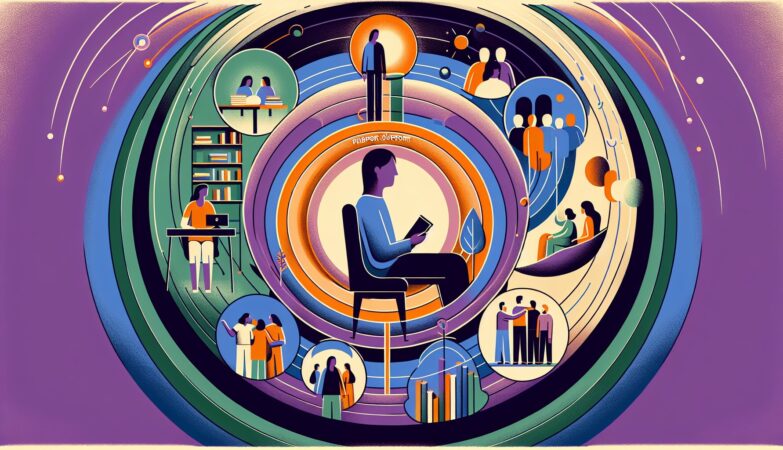I was in a hiring meeting when I heard it. A hiring manager said: “We need people who can think creatively, adapt quickly, and solve problems we haven’t even identified yet.”
Then someone asked: “What do you look for on a resume?”
Answer: “Well, first they need a degree from a good university.”
Nobody saw the contradiction. But it’s there, staring right at you. We want innovative thinkers but we filter for compliance. We want people who break the rules but we only hire people who followed them perfectly.
The Employer’s Dilemma
Let me put myself in an employer’s shoes for a second. You’re hiring for a critical role. You get 500 applications. How do you filter them down?
You could read through 500 portfolios, interview 100 people, run technical assessments on 30. But that takes time and resources. Or you could just check: “Do they have a degree from a reputable university?” Suddenly you’re down to 50 applications.
Now reduce again: “Do they have 3 years of relevant experience?” Down to 20.
This is efficient. This is safe. This is what every other company does.
The problem is what happens next. You interview those 20 people and notice something: they’re all kind of the same. They all followed the same path. They all have the same background. They all think similarly because they were trained in the same system.
But here’s the thing: you’re not going to hire the person without a degree. Because if they fail, that’s on you. You took a risk and lost. But if you hire the person with the degree and they’re mediocre? Well, that’s not your fault. They had the credentials. You did what everyone does. You’re safe.
This is the credibility trap.
The Credibility Shortcut
Here’s what a credential actually is: it’s a signal. It says “this person went through an institutional process and came out the other side.”
It’s verifiable. It’s standardized. You can check a box: “Degree from accredited university, check.” It’s easy to compare across candidates. Two people with degrees from MIT are, in theory, more comparable than two people with different life experiences and self-taught skills.
But here’s what employers think it means: it means the person is competent and reliable.
Here’s what it actually means: it means the person is good at following institutional rules.
Those are not the same thing.
A credential is a proxy for compliance, not competence. It says “this person sat through four years of classes, passed tests, and got a piece of paper.” It doesn’t say “this person can solve novel problems, adapt to change, or think creatively.”
But employers treat it as if it does. So they end up with a workforce of people who are very good at doing what they’re told, and terrible at figuring out what to do when nobody tells them.
Then they’re confused why the culture isn’t more innovative.
Why Nobody Breaks the Cycle
Here’s the real trap: this system only works if everyone plays by the same rules.
Imagine you’re a forward-thinking CEO and you decide: “We’re going to hire talented people regardless of credentials. We’re going to assess actual skills.”
Now you’re taking on risk that nobody else is taking. If one of those people fails, it’s visible. People talk about it. It becomes a cautionary tale: “Remember when Company X hired that person without a degree and they crashed and burned?”
But if you stick with credentials and hire a mediocre person, nobody talks about it. That’s just normal. That’s what everyone does.
So the incentives are backwards. The safe choice is the wrong choice, but the safe choice is still the safe choice. And in business, safe usually wins.
Now flip it. Imagine you’re a university and you decide: “We’re not going to focus on test scores and credentials. We’re going to teach practical skills that actually matter in the real world.”
Your graduates don’t have credentials that employers recognize. So they struggle to get jobs. Your enrollment drops. Your funding drops. You’re out of business.
Schools can’t break the cycle either. They’re locked in by the same incentives. So nothing changes.
The Invisible Cost
Here’s something I find fascinating: employers are missing talent constantly. There are brilliant people out there without traditional credentials. People who taught themselves, learned through building, developed skills through unconventional paths.
Employers never hire them. So they never know what they’re missing.
The cost is invisible. You can’t measure the innovation you didn’t get because you didn’t hire the person. You can’t count the problems that didn’t get solved because the right person never got a chance.
But the cost of hiring someone who fails? That’s very visible. That’s a problem that shows up on the P&L.
So employers are biased toward the safe choice, even when the safe choice costs them more in the long run. It’s a classic case of incentives being misaligned with what’s actually best.
And because the cost is invisible, nobody’s motivated to fix it.
The Self-Perpetuating Machine
So here’s how the trap works:
Schools optimize for credentials because employers hire by credentials. Employers hire by credentials because that’s the safe signal available. Students chase credentials because that’s what they need to get jobs. And round and round it goes.
Everyone involved knows it’s broken. Employers know credentials don’t measure competence. Students know the degree doesn’t make them capable. Schools know they’re teaching for tests instead of teaching for learning.
But nobody wants to be the first to break the pattern. It’s a collective action problem. You need everyone to change at once, or the person who changes gets punished.
So we’re all stuck in a system that works for nobody but nobody can escape from.
The Fragility Nobody Sees
But here’s what’s interesting: the system looks stable, but it’s actually incredibly fragile.
It only works if everyone keeps playing along. If enough employers stop caring about credentials and start assessing skills directly, the whole thing collapses. If enough talented people succeed without credentials, the signal breaks down. If enough companies hire based on actual competence and end up with better results, the incentives flip.
It looks like an iron law of the market. But it’s really just inertia. Habit. Everyone waiting for someone else to move first.
What Comes Next
So we’ve closed the loop. We’ve shown how the system perpetuates itself. How everyone involved knows it’s broken but nobody wants to be the first to break it.
Starting tomorrow, we move into Act 2. We’re going to stop theorizing about the problem and start looking at real evidence. Real stories of people who succeeded despite the system or because they ignored it. Real examples of where the system breaks down and what happens when it does.
Because the system is fragile. And fragile systems break. The question is just what breaks them first.







